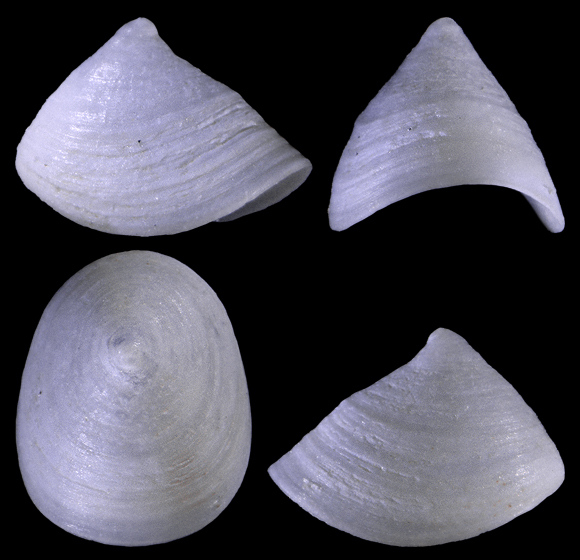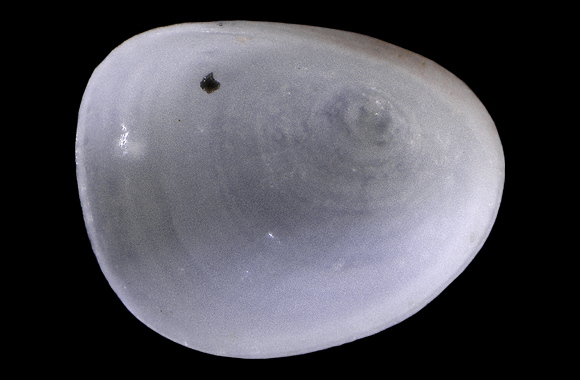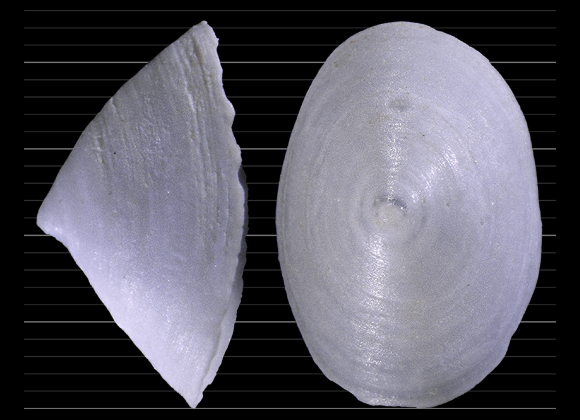Dantart & Luque, 1994

Norway to NW. Africa, Azores to Mediterranean. Grazer on organic substrates, in the detritic bottoms from about 30m down to circa 2000m deep. « Vive prevalentemente all’interno dei tubi di policheti » (Scaperrota, Bartolini & Bogi: Accrescimenti vol. 1, Ancona 2009, p.20).
Above and below: 120m deep, Bozcaada island, Çanakkale province, W. Marmara, NW. Turkey. 1,75mm.

Inside smooth. There is some confusion between living and fossil Lepetellas in the area. Hence the recommendation by Dantart & Luque (1994) to reserve the taxon L. laterocompressa (de Rayneval, van den Hecke & Ponzi, 1854) to fossils like those found in the type-locality Monte Mario (Roma, Lazio, Italy), and use espinosae to living animals. But it must be taken into account that the shells of the three species that live in the northeastern Atlantic (barrajoni, espinosae and sierrai) have about the same morphology and can vary in the same way. The specific differences are anatomical. Hence the importance of having accurate data: barrajoni and sierrai living outside the Mediterranean, espinosae living also inside, the shells from Mediterranean may be of the latter (large shells from western Mediterranean could belong to barrajoni though), while empty shells from Atlantic could belong to any of the three species.
Source: Dantart L., Luque A: “Cocculiniformia and Lepetidae (Gastropoda: Archaeogastropoda) from Iberian waters”, Journal of Molluscan Studies vol. 60(3), july 1994, p.277-313.
Source: Dantart L., Luque A: “Cocculiniformia and Lepetidae (Gastropoda: Archaeogastropoda) from Iberian waters”, Journal of Molluscan Studies vol. 60(3), july 1994, p.277-313.
